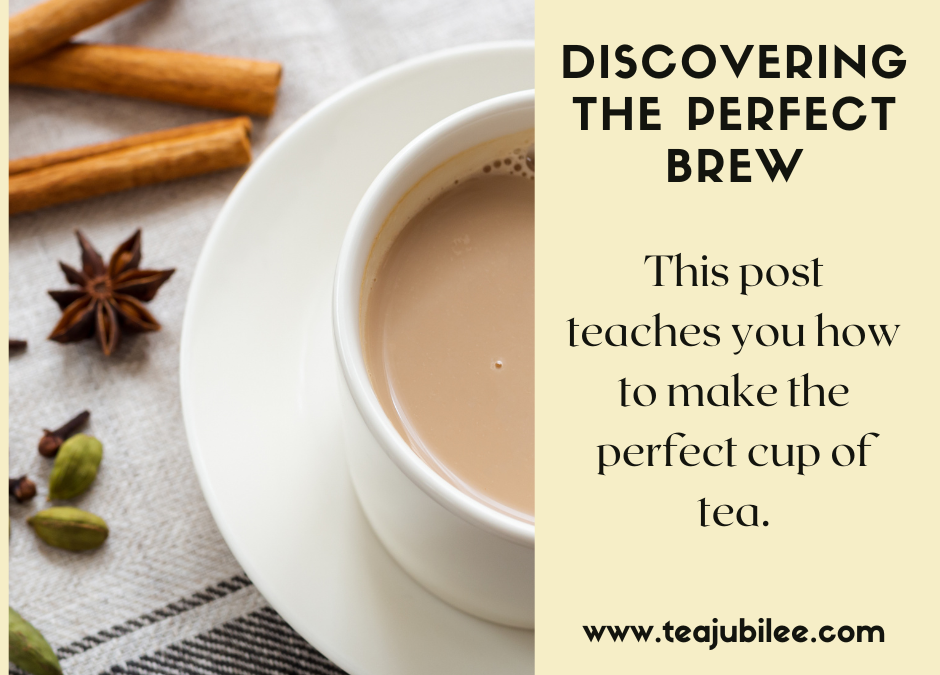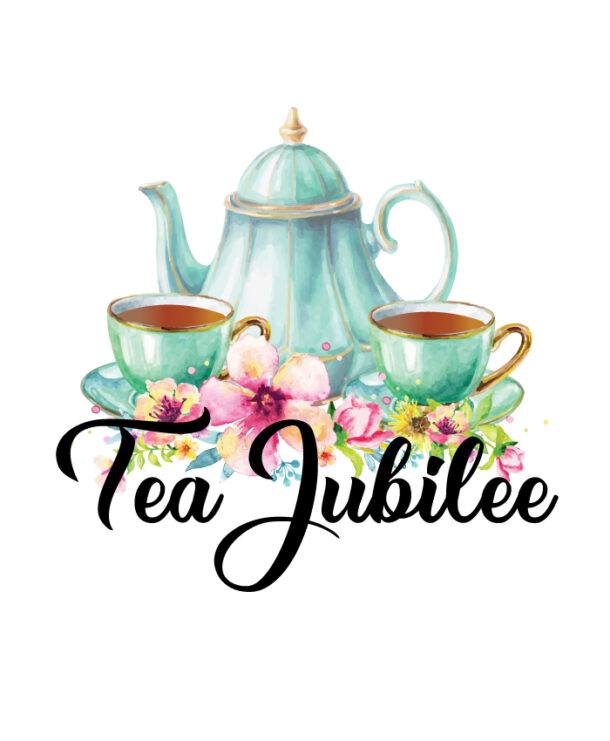==================
A Caveat and Affiliates
First off, a little caveat: within my articles you will find affiliate links, meaning if you buy them, I get a small commission. Your cost is not affected. In addition, I am an Amazon Associate and I earn from qualifying purchases on Amazon.
And yes, if I say that I recommend a product here, it means I truly believe it is a good product. I refuse to recommend any product that I have not researched and believe to be a good value.
Even better, I provide you with a very clear picture of the product, it’s use, and the probable value.
Earning your trust is important to me. I run this website myself and the commissions and donations help support the site.
Sound reasonable and fair enough? Let’s continue to the article.
==================
Contents
Discovering the Perfect Brew: An Insightful Guide to Different Tea Steeping Method.
Tea is much more than just a beverage. It is an art form, a ritual, and a catalyst for community and conversation. This article explores the rich history and diverse techniques of tea steeping, providing a comprehensive guide to the different methods and factors that influence the perfect brew.
Introduction to the art of tea steeping
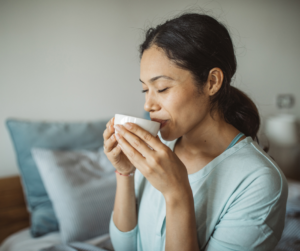
The art of tea steeping is a journey of discovery, experimentation, and refinement. It is about understanding the nuances of different tea types, exploring various steeping techniques, and honing one’s senses to appreciate the subtle flavors and aromas that each brew brings forth.
Tea steeping is a process steeped in tradition, with origins tracing back thousands of years. It is a practice that has been passed down from generation to generation, evolving and adapting over time to suit changing tastes and preferences. Despite these changes, the essence of tea steeping remains the same: to extract the best possible flavor from the tea leaves.
Moreover, the art of tea steeping is not just about the end product – the brew. It is also about the process itself. The act of steeping tea can be a meditative practice, a moment of calm in the midst of a busy day. It is a reminder to slow down, savor the moment, and fully engage with the senses.
Unearthing the history of tea steeping
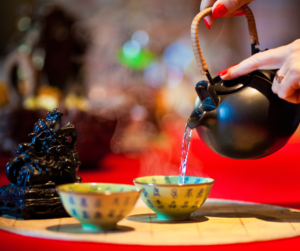
The history of tea steeping is as rich and varied as the beverage itself. Its history spans continents and cultures, reflecting the diverse ways in which different societies have engaged with and interpreted the practice of tea steeping.
The origins of tea steeping can be traced back to ancient China, where tea was first discovered over 4,000 years ago. The earliest records of tea steeping come from the Tang Dynasty (618-907 AD), during which tea was steeped in small, lidded bowls known as gaiwans. The tea leaves were placed in the bowl, boiling water was added, and the tea was then sipped directly from the gaiwan.
Over time, tea steeping methods evolved, influenced by changes in tea production, cultural preferences, and technological advancements.
In Japan, the tea ceremony – a ritualized form of tea preparation that emphasizes mindfulness and respect – became a central part of the country’s cultural fabric. In the West, the introduction of the teapot in the 17th century revolutionized tea steeping, allowing for larger quantities of tea to be brewed at once.
Today, tea steeping is a global practice, with countless variations and adaptations reflecting the diverse tastes and traditions of tea drinkers around the world.
Understanding different types of tea

Understanding the different types of tea is crucial to mastering the art of tea steeping. Each type of tea has its own unique characteristics, which influence how it should be steeped to achieve the optimal flavor.
Green tea, for example, is delicate and easily overpowered. It requires a gentle touch, with lower water temperatures and shorter steeping times to prevent the tea from becoming bitter. On the other hand, Black tea is robust and full-bodied, able to withstand higher temperatures and longer steeping times.
Oolong tea is somewhere in between, with a complex flavor profile that can be manipulated by adjusting the water temperature and steeping time. White tea is the most delicate of all, requiring the lightest touch to preserve its subtle flavors and aromas.

Furthermore, the quality of the tea leaves also plays a significant role in the steeping process. High-quality, whole-leaf teas offer a depth of flavor and complexity that lower-quality, broken-leaf teas cannot match. The size and shape of the tea leaves can also affect the steeping process, with larger, whole leaves generally requiring more time to extract their flavors fully.
The perfect brew: An overview of tea steeping methods
There are several different methods of tea steeping, each with its own strengths and weaknesses. The chosen method depends on the steeped tea type, personal taste preferences, and the tools available.
The infusion method involves placing the tea leaves in a teapot or infuser and pouring hot water over them. The leaves are then left to steep for a certain amount of time, after which the tea is strained and served. This method is most commonly used for black, green, and white teas.

The boiling method, often used for stronger teas like puer and masala chai, involves boiling the tea leaves in water for an extended period of time. This extracts a strong, robust flavor from the leaves, resulting in a powerful, intense brew.
The decoction method is similar to the boiling method but involves boiling the tea leaves in a small amount of water to create a concentrated tea extract, which is then diluted with more water and served. This method is often used for herbal teas and tisanes.
The tisane method is used for herbal infusions that contain no tea leaves. These infusions are made by steeping herbs, flowers, fruits, or other plant materials in hot water.
Tea steeping method: Infusion

The infusion method is the most common method of tea steeping and is often used for delicate teas like green, white, and oolong. It involves placing the tea leaves in a teapot or infuser, pouring hot water over them, and allowing them to steep for a certain amount of time.
The key to the infusion method is controlling the temperature and steeping time-based on the type of tea. Green and white teas, for example, should be steeped at lower temperatures (around 70-85°C) for shorter periods of time (1-3 minutes) to prevent the tea from becoming bitter. Black and oolong teas can withstand higher temperatures (85-100°C) and longer steeping times (3-5 minutes).
Once the tea has steeped for the appropriate amount of time, it is strained and served. The tea leaves can be re-infused several times, with each infusion revealing new layers of flavor.
Tea steeping method: Boiling
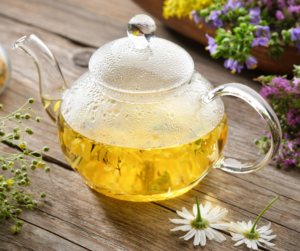
The boiling method is a more intense method of tea steeping, often used for robust teas like puer and masala chai. It involves boiling the tea leaves in water for an extended period of time, allowing the flavors to infuse into the water fully.
To use the boiling method, the tea leaves are added to a pot of water and brought to a boil. The heat is then reduced, and the tea is allowed to simmer for a specific amount of time-based on the type of tea and personal taste preferences.
The boiling method extracts a strong, robust flavor from the tea leaves, resulting in a powerful, intense brew. However, care must be taken not to over-boil the tea, as this can result in a bitter, over-extracted brew.
Tea steeping method: Decoction
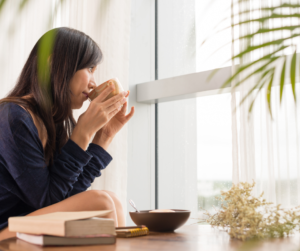
The decoction method is similar to the boiling method but involves boiling the tea leaves in a small amount of water to create a concentrated tea extract. This extract is then diluted with more water and served. This method is often used for herbal teas and tisanes, which require a longer steeping time to extract their flavors fully.
The decoction method involves adding the tea leaves to a small amount of water and bringing it to a boil. The tea is then simmered for a specific amount of time, after which the concentrated tea extract is strained and diluted with more water.
The advantage of the decoction method is that it allows for a more controlled extraction of flavors, resulting in a more balanced and nuanced brew. However, it requires a bit more time and effort than other steeping methods.
Tea steeping method: Tisane
Tisanes, or herbal infusions, are a type of tea that does not contain any actual tea leaves. Instead, they are made by steeping herbs, flowers, fruits, or other plant materials in hot water. The tisane steeping method is similar to the infusion method but has a few key differences.
Because tisanes do not contain any tea leaves, they do not have the same bitter compounds that can be over-extracted with prolonged steeping. As such, they can be steeped for longer periods of time without becoming bitter. The exact steeping time will depend on the specific ingredients used, but a general guideline is to steep tisanes for 5-10 minutes.
Tisanes can be steeped using an infuser, teapot or simply by adding the ingredients directly to a cup or pot of hot water. Once the tisane has steeped for the desired amount of time, it is strained and served.
Finding your perfect brew: Factors that influence tea steeping.

There are several factors that influence the steeping process, and understanding these can help you find your perfect brew.
The type of tea is one of the most important factors. As discussed earlier, different types of tea require different steeping temperatures and times to achieve the optimal flavor.
The quality of the tea leaves also plays a significant role. High-quality, whole-leaf teas offer a depth of flavor and complexity that lower-quality, broken-leaf teas cannot match.
The water temperature and steeping time are also crucial. Too hot or too long, and the tea can become bitter and over-extracted. Too cool or too short, and the tea may be weak and under-extracted.
Finally, personal taste preferences also play a role. Some people prefer a stronger, more robust brew, while others prefer a lighter, more delicate flavor. Experimenting with different types of tea, steeping times, and water temperatures can help you find the brew that best suits your tastes.
Conclusion: Mastering the art of tea steeping

Mastering the art of tea steeping is a journey of exploration and discovery. It is about understanding the nuances of different tea types, experimenting with various steeping methods, and refining your senses to appreciate the subtle flavors and aromas that each brew brings forth.
Whether you are a seasoned tea connoisseur or a newcomer to the world of tea, the journey toward the perfect brew is one that offers endless possibilities and rewards. So take a moment, brew a cup of tea, and immerse yourself in the rich history, diverse techniques, and sensory delights of tea steeping.
In the end, the perfect brew is not just about the tea. It is about the experience – the ritual of steeping, the anticipation of the first sip, and the satisfaction of a well-brewed cup of tea. So here’s to the journey and to find your perfect brew.
More From Tea Jubilee.
Tea Rituals from Around the World
The Reddit question is, “How can I make a good cup of tea?”
How to Make the Perfect Cup of Tea
Looking to try out some herbal teas? Check out the link here to learn more.
And that’s all for today. We had fun writing about Discovering the Perfect Brew. Let us know what you liked about this article. Comment below on your thoughts on this post. We love to hear from our readers.
Have a great day!


